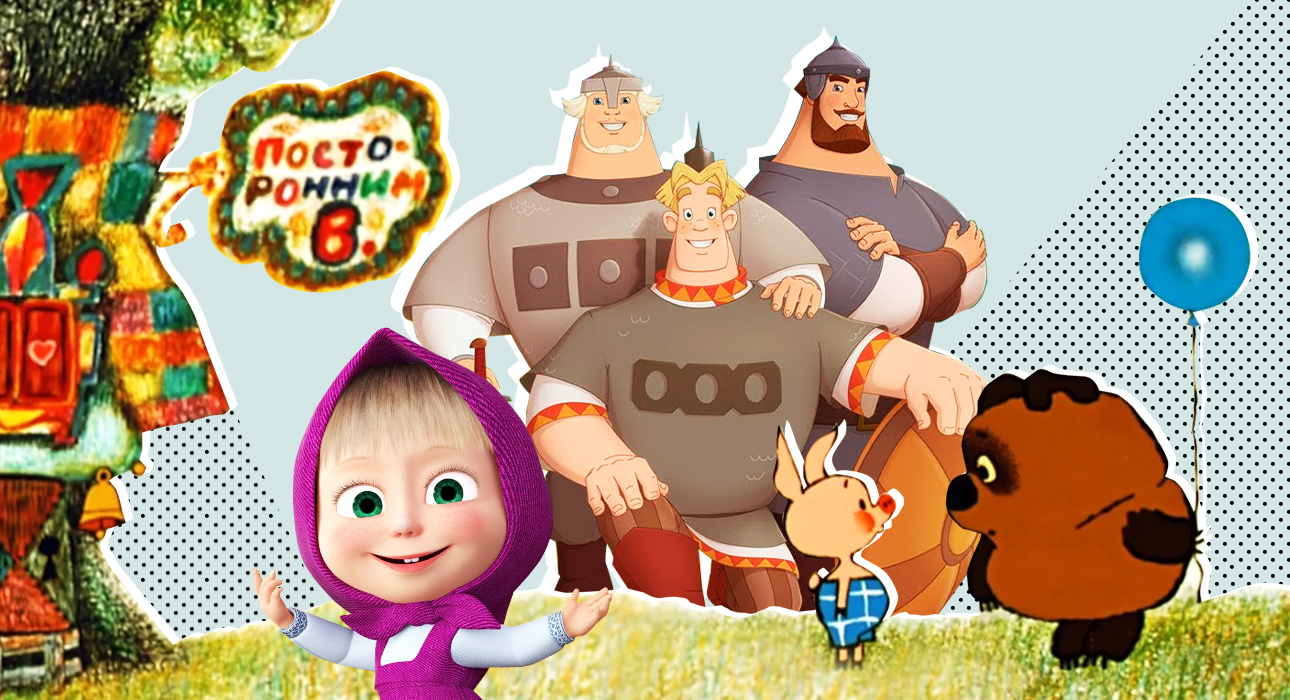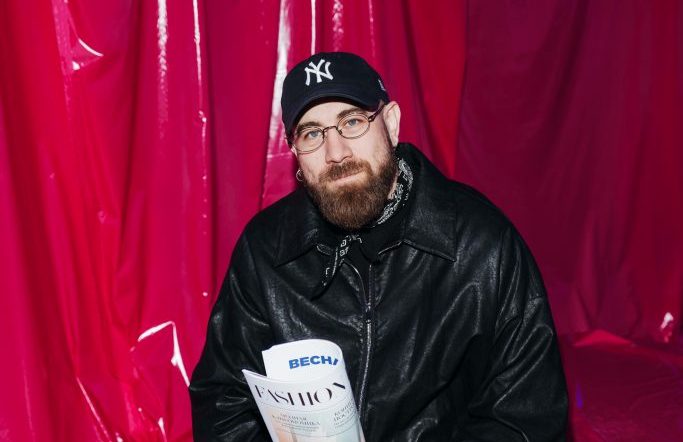Domestic animation is still associated with Soviet cartoons – timeless classics that seem to be of interest to viewers for a long time. For industry figures, the heyday of Soyuzmultfilm was a unique time of almost absolute creative freedom, the development of the concept “the main thing in a cartoon is not visual, but semantic”: since the 50s of the XX century, the studio has been producing legendary cartoons by Fyodor Khitruk “ Winnie the Pooh”, “Bremen Town Musicians” Inessa Kovalevskaya, “Well, wait a minute!” Vyacheslav Kotyonochkin, Boris Stepantsev’s The Kid and Carlson and other works that are today considered the golden backdrop of Soviet animation. As early as the 1970s, Soyuzmultfilm Europe gained a reputation as the largest animation studio in .: thematic boundaries, budgets and technical capabilities expanded, the studio’s projects gained international recognition and love of the audience.Soviet animation was a real standard and it seemed that it could not be taken away from it, but after two decades at the height of its fame it began to lose ground. In the late 80’s there were personnel, production and creative crises. True, the renaissance of Russian animation did not happen after that: the early 2000s were marked by the rise of domestic feature films, but animation was limited to fairy tales (“Jewelry Mountain”) and hand-drawn cartoons about heroes ( now this is the most popular cartoon on the Russian market one of the series). The disastrous state of the industry was generally discussed only in 2011, on the eve of the 75th anniversary of Soyuzmultfilm: then the most popular animators Yuri Norshtein, Leonid Shvartsman, Andrey Khrzhanovsky and Eduard Nazarov published an open letter to the president.
“The studio is almost non-existent. There is a box with corridors and rooms and a viewing room. There is solemn silence in the studio, sometimes film crews show up and officials rent certain spaces.

But after that, the once legendary studio, and with it the rest of animation, began to recover from the crisis to become one of the most promising areas of Russian cinema in a few years. We remember how this happened 110 years ago on Russian Animation Day, when the premiere of the first puppet cartoon “Lucanida the Beautiful, or the Battle of the Mustaches with the Deer” took place.
The main difference between post-Soviet animation and its predecessor was the loss of originality and the gradual decline of quality: independent studios and animators focused on marketing research and tried to play on audiences’ nostalgia. The climax of the latter is Soyuzmultfilm’s “Well, you wait!” and Prostokvashino in 2018 and 2021, respectively: modernized versions of Soviet classics with a new animation style, illogical references, broken characters (Uncle Fyodor became a hipster!) and obvious errors (Uncle Fyodor’s sister was called Vera Pavlovna for some reason, father – Dmitry) . Even the author of the original book series, Eduard Uspensky, who intended to sue the creators of the animated series, but unfortunately could not see the trials, opposed the new Prostokvashino. Yuliana Slashcheva, chairman of the board of Soyuzmultfilm, later announced that cartoons should meet the realities of the modern world, but the studio decided to reject such reboots.

According to animation historian and Cinematography Research Institute employee Georgy Borodin, the facts were as follows: Even in the early 2000s there was a demand for “paintings designed for a wide audience and not devoid of stylistic originality and ideological depth”. Tales have become such projects: the same “Jewelry Mountain”, “Alyosha Popovich and the Serpent Tugarin”, “Ivan Tsarevich and the Gray Wolf” (once such stories made it possible to collect the box office of the Melnitsa studio, about which heroes produced series). The state (especially the Ministry of Culture) was responsible for the financing of animation productions, and everything went well until the reorganization of the State Film Agency in 2008, and therefore the subsidies stopped completely. During this period, for example, many small studios were closed – among them “Pilot”, which created the “Jewelry Mountain”. In 2011, two years after another crisis, the Russian animation industry reached less than 30 studios.

Yet it was too soon to put an end to it, and with the change of decades, publishing began. “Masha and the Bear” – the most popular animated series today, included in the Guinness Book of Records as the most watched cartoon in the world (The episode “Masha + porridge” received more than 4 billion views on YouTube) and has been translated into 39 languages. Dmitry Loveyko, general manager of the Animaccord studio, which produced the series, said:
“Masha and the Bear” was actually very thoughtful: it contains elements of universal human relations, elements of national folklore from Russian fairy tales. Eternal values, friendship and relations between an adult and a child turned out to be interesting. For some cultures, we’ve often used our own approach, as few do in animation. Then we do not have big conversations and long dialogues, we have a circus, clowning – something that is clear without words.

With “Masha and the Bear” in many ways began a huge trend in Russian animation for deep children’s stories, which sold well abroad. The animated movie The Snow Queen 3: Fire and Ice (2018), released by Wizart in collaboration with Chinese distributor Flame Node, is the highest-grossing Russian movie ever shown in China, with more than $11 million in revenue. The rights to the animated series Three Cats, owned by CTC Media, have been sold in 170 countries worldwide. The second season of Ricky’s animated project “Tim and Tom” for preschoolers, broadcast on China’s largest video host YouKu, entered the top three in popularity among the channel’s viewers. Since the early 2010s, investors began to pay attention to Russian animation, but the peak of interest occurred only a few years ago: for example, in 2020, Sberbank invested one billion rubles in Soyuzmultfilm to create cartoons and TV shows for children. Feature films for school and preschool age, as well as family audiences, and the popular Smeshariki a year ago, with the support of Yandex, were relaunched.

The pandemic also benefited Russian animation: “The distribution of theatrical films has been stopped for a long time. People were isolated, communication possibilities were reduced. This has led to an explosion in requests for online content on VOD (video on demand) platforms. note. ed.), including in the field of animation, ”Irina Mastusova, managing director of the Association of Animated Films, told Forbes Russia. Studios’ production capacities have also increased: a 10-minute cartoon now takes half the time it used to, according to Soyuzmultfilm’s general manager, Boris Mashkovtsev.
Now the animation market is primarily focused on preschoolers: animated series “Fixies”, “Babies”, “Masha and the Bear”, “Three Cats”, full meters (for example, “Snow Queen”), educational stories that may not be very interesting for the whole family, but win the love child. Therefore, Russian animation, in particular, cannot be compared with those presented to the audience by Disney or Pixar, whose cartoons are watched and loved even by adults – it is adapted to the age category and successfully develops in it. at international level.. But the main problem remains the shortage of staff (in 2017, Animaccord’s Dmitry Loveyko said that there were only 2.5 thousand animators in the whole of Russia), and support at the state level is needed: “It is very clear that domestic animation is very open. It is different from western budgets. If we compare the feature films there and here, the difference between the quantities will be two orders of magnitude. Until now, Russian animation can not boast of volume and wide popularity in the world market. Such breakthroughs as “Fixiki”, “Masha and the Bear”, “Smeshariki” still do not form an isolated and common landscape. However, the foundation for the future has certainly already been created, ”says Ilya Popov, general producer of the Riki group of companies, in a conversation with Forbes Russia. And of course, I really want to believe that.
Source: People Talk





